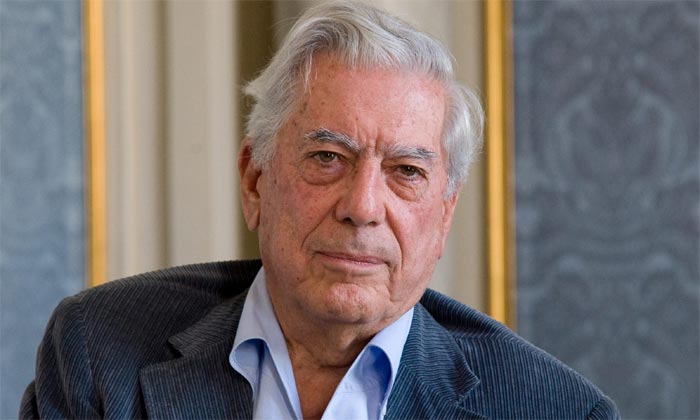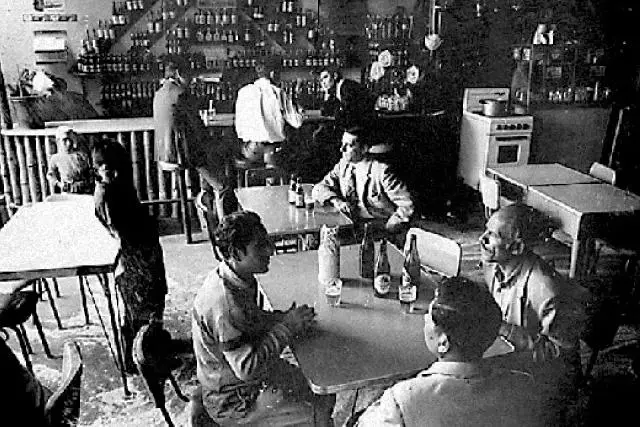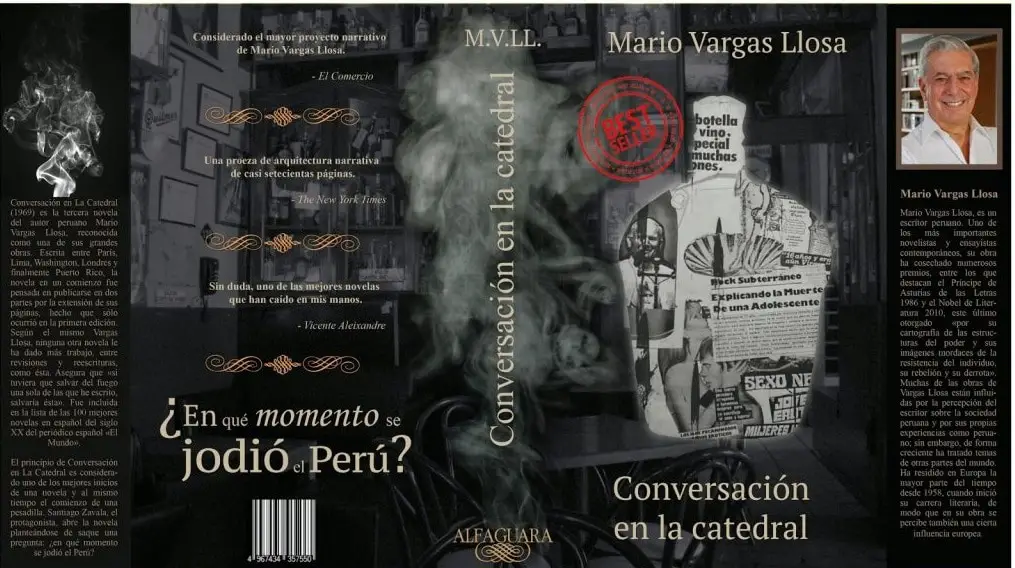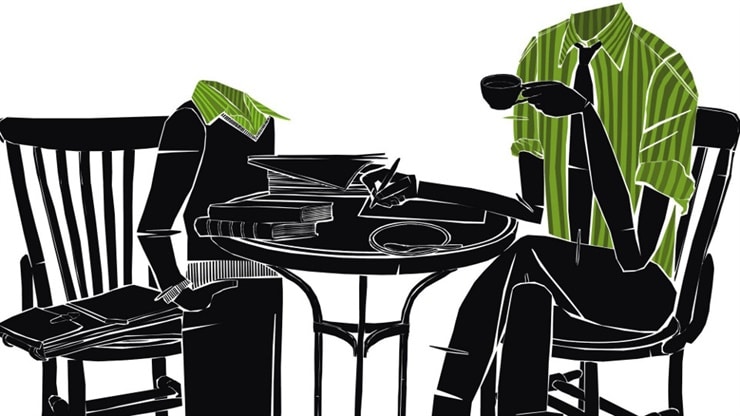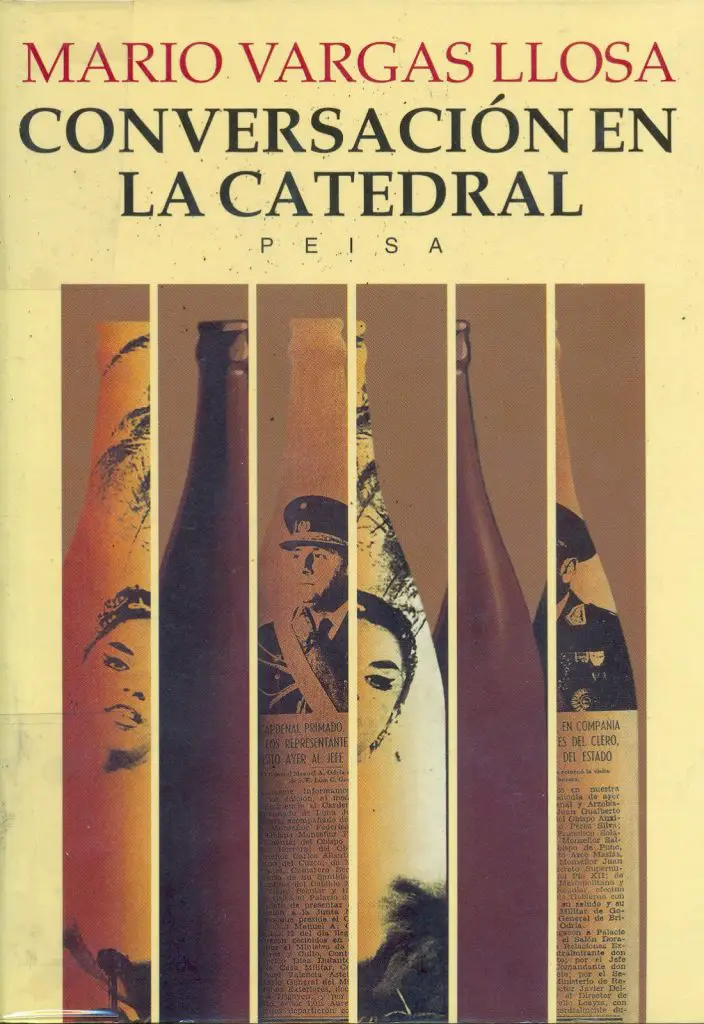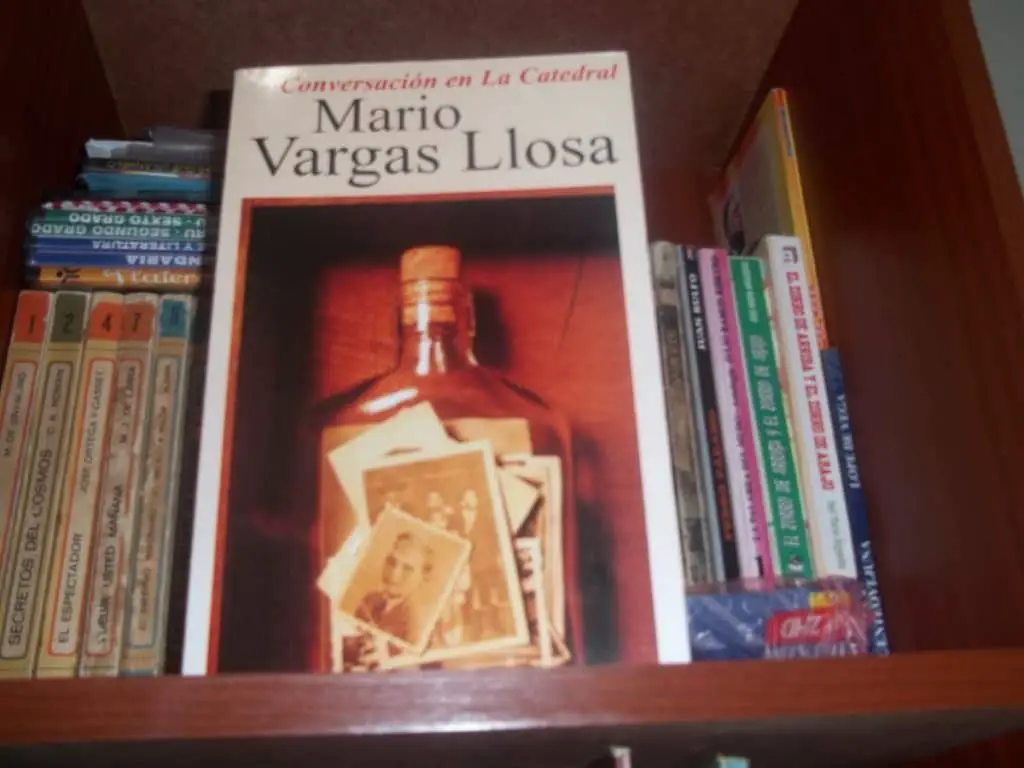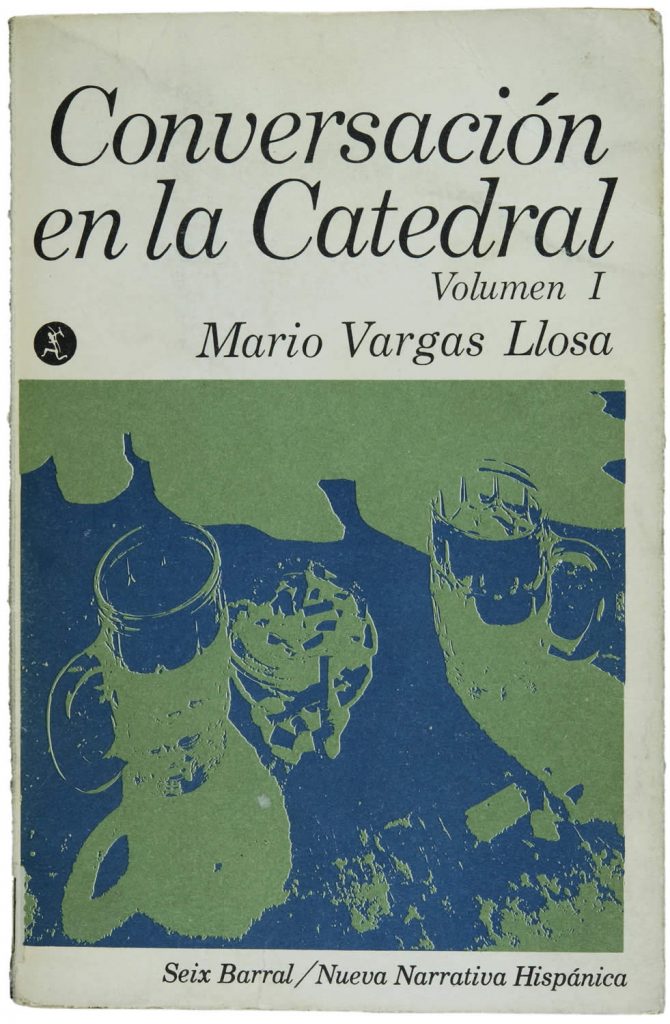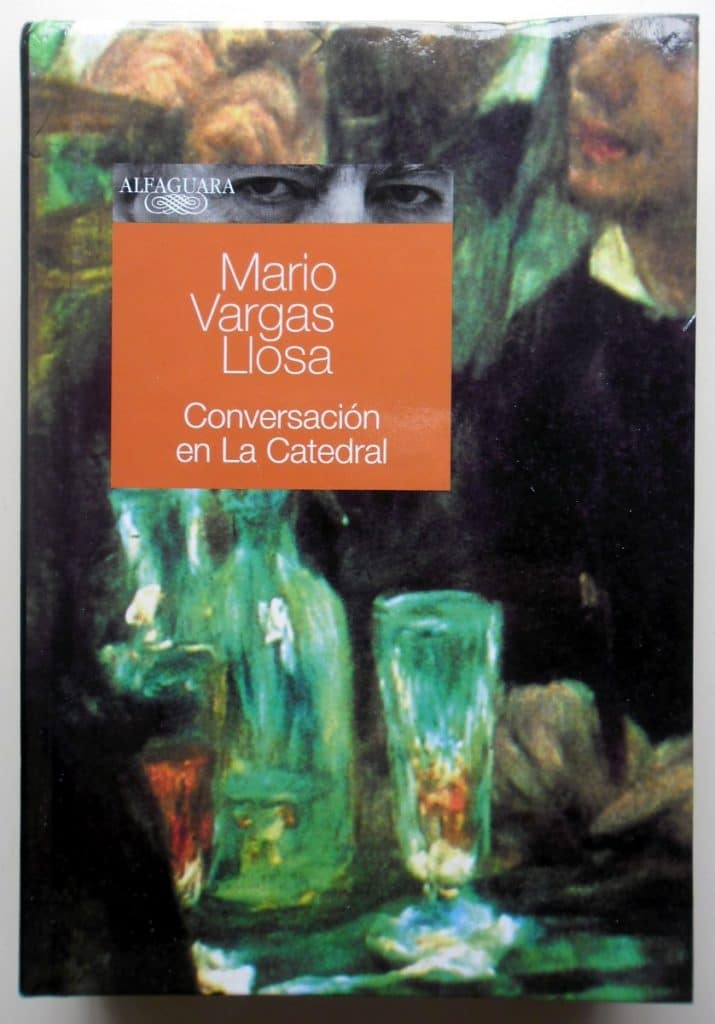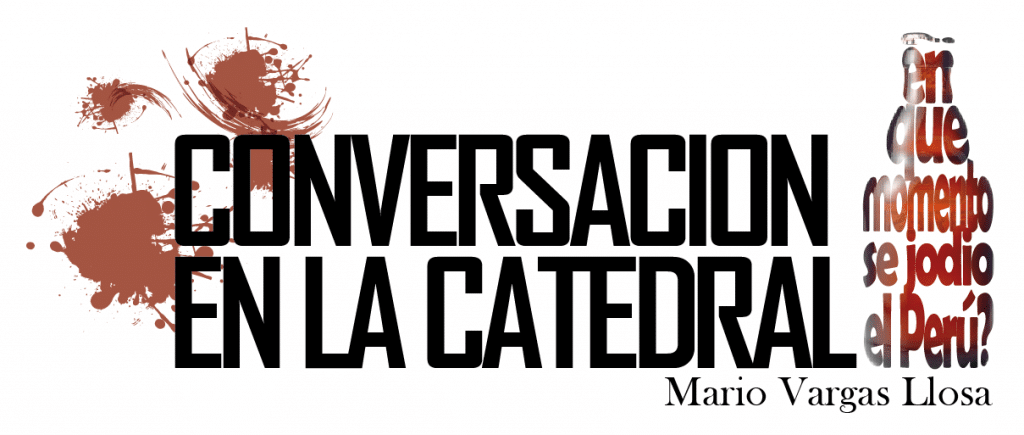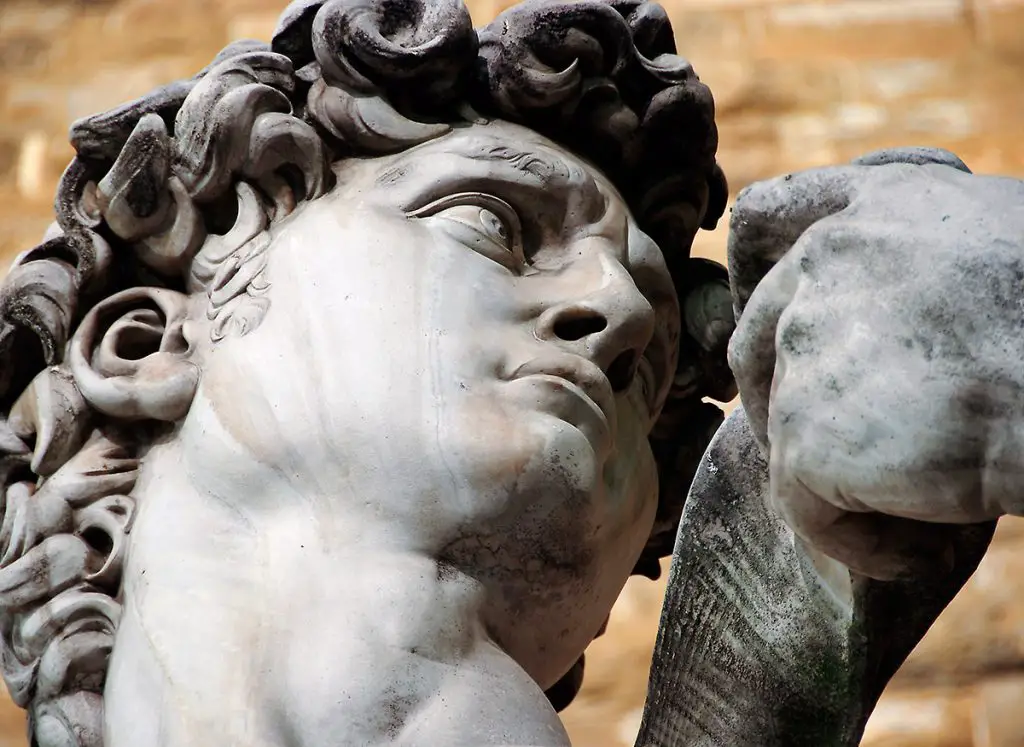The novel Conversation in the Cathedral is written by the Peruvian Mario Varga Llosa, in fact it is the third one he has written, it was published in 1969, he started writing it in Paris and finished it in Puerto Rico, the author considers that it was the book that gave him more work, know more about this work below.
Writer in conversation in the cathedral
Born in Arequipa, Peru, on 28 March 1936, Mario Vargas Llosa is a Peruvian writer whose commitment to social change is evident in his novels, plays and essays. He was an unsuccessful candidate for the presidency of Peru in 1990. Vargas Llosa was awarded the 2010 Nobel Prize in Literature for his portrayal of power structures and his incisive images of individual resistance, rebellion and defeat.
Vargas Llosa received his early education in Cochabamba, Bolivia, where his grandfather was the Peruvian consul. He attended a number of schools in Peru before entering the Leoncio Prado military school in Lima in 1950, and then the University of San Marcos in Lima. His first published work was El Escape of the Inca, a play in three acts. His stories then began to appear in Peruvian literary magazines, and he contributed to Cuadernos de composición y Literatura (1958-59).
He worked as a journalist and broadcaster and attended the University of Madrid. In 1959 he moved to Paris, where he lived until 1966 in a Latin American expatriate community that included the Argentinian Julio Cortázar and the Chilean Jorge Edwards. It was during this period that he set his novel Travesuras de la niña mala. Vargas Llosa’s first novel was The City and the Dogs.
Plot of The Conversation in the Cathedral
This is the third novel by the Peruvian Nobel Prize winner Mario Vargas Llosa. It is a portrait of Peru under the dictatorship of Manuel A. Odrías in the 1950s and describes life in different social classes. One of the main themes of the novel is the dissatisfaction of Santiago Zavala, the son of a poor bourgeois, with the corrupt government of Odrías. The novel unfolds in four parts, which are intricately interwoven. Here is a video interview with the author about his novel Conversation in the Cathedral.
The two levels, present and past, are constantly changing. The present is the exchange of words between Santiago and Ambrosio in the Catedral restaurant, and the past is the content of the conversation. In addition to the two levels, the text contains passages that do not fit into the simple two-level model. These are the lines of text that the reader believes are spoken by an omniscient narrator. These include passages on which Santiago and Ambrosio cannot comment.
The novel begins with a conversation between two different characters who meet again in the mid-1960s after many years without seeing each other. The dialogue, which lasts four hours, serves to link the stylistically independent stories. From one beer to the next, the interlocutors are linked by threads that take the reader back to the time of General Manuel A. Odría’s dictatorship, a period of political repression and corruption that affected all aspects of life.
Characters developed
There are four characters who develop in the novel Conversación En La Catedral: Santiago Zavala, Don Fermín Zavala, Zambo Ambrosio and Cayo Bermúdez. Each of them is accompanied by a series of characters of different social origin, profession, character and importance. These characters include Santiago Zavala, a thirty-something journalist from a bourgeois family from which he has long been estranged. This is the protagonist who, against his family’s wishes, enters the University of San Marco.
On the other hand, there is Ambrosio, an old man who kills dogs in the municipal kennel and who was the driver of Don Fermín, Santiago’s father, an important man in the dictatorship of General Manuel A. Odría. Cayo Bermúdez is another of the novel’s main characters. He plays his role mercilessly, defending the interests of General Odría: he persecuted, oppressed and tortured his opponents (mostly “apristas”), not hesitating to use immoral methods to silence the opposition.
He conquered a mistress of luxury called Ortensia, a former cabaret artist nicknamed “La Musa”, who provided him with all kinds of luxuries, but eventually abandoned her after he was removed from power. Several characters in Odría’s entourage are easily identified with historical figures, even if their names have been changed by the author: Cayo Bermúdez is Alejandro Esparza Zañartu, and Colonel Espina is General Zenón Noriega.
Place and context
The place where the conversation takes place is a popular bar (which no longer exists), on a corner of the second block of Av. Alfonso Ugarte, in the area of the so-called Puente del Ejército over the Rímac river, known locally as “La Catedral” because of the height of its roof and, above all, the shape of an entrance door to the church. The action takes place during the reign of General Odría and continues in the years after the fall of the regime.
Odría is constantly mentioned in the novel, but he is not part of the central plot. It is not really a historical novel, but a literary fiction based on historical events. Vargas Llosa also recreates real situations in Conversación En La Catedral, such as the extravagance of Bermúdez / Esparza, the political opposition, the repression of students and political groups considered subversive, the power struggles and conspiracies, and the enormous public corruption.
The scene of the thugs in the service of the government, which broke out during an opposition rally in the Arequipa theatre and provoked an angry reaction from the people, is also the reenactment of a historical episode, the same one that led to the Arequipa Revolution of 1955 and the overthrow of Bermúdez / Esparza. The civilisation of the spectacle is another book written by llosa, I invite you to know it.
Summary of the conversation in the cathedral
La conversación en la catedral is set in Peru, mainly in Lima, but also in Arequipa, Ica, Ancon and Pucallpa, from the end of 1948 to the mid-fifties, during and immediately after the Odría dictatorship. The novel consists of four main parts, so I will now give a chapter-by-chapter summary of Conversation in the Cathedral.
Chapter-by-chapter summary of Conversation in the Cathedral
Part One
The story goes back to those distant times when Santiago Fermín Zavala’s father was an entrepreneur, partly because his friend Cayo Bermúdez had given him lucrative government contracts. More specifically, the past builds up from the moment when Santiago’s mother, Señora Zoila, kicks out the maid, Amalia. Listen to an extract from the book below.
As well as building the road from Lima to Pacasmayo, Fermín Zavala also runs a pharmaceutical company. He employs Amalia in the latter. Cayo Bermudez, lives in Chincha, this character is called by his former classmate, who belongs to the board of the Minister of the Interior, this companion of Cayo is Colonel Espina, director of security in Odria’s government team, Cayo took his childhood friend Ambrosio as a chauffeur to Lima. Another Latin American novel is Eleven Minutes to Know Her.
Cayo Bermudez had supported himself and his wife Rosa in Chincha by selling water tractors. Rosa had to stay in Chincha, and Cayo Bermudez supported her financially while he went to Lima. Fermin Zavala calls his favourite son Santiago “Flaco”. Santiago does not take his law studies at the University of San Marcos in Lima very seriously. He doesn’t like being a poet, but he does like literature. He works undecidedly in a communist cell, but prefers to remain sympathetic to the party.
He confessed to the comrades that his father was close to the government. Santiago was arrested during a strike in solidarity with the tram workers. Cayo Bermudez had not only questioned the Minister of the Interior, Colonel Espina, but had also set up the “San Marcos vomit” at the university. Espina is mad. Cayo Bermúdez knows that people like Odría do not stay in power forever.
Fermín Zavala’s loyalty was not far behind. Odría was disappointed when the henchman rejected the senator. Fermín Zavala confides in his son that he will one day overthrow Odría. But his reputation is enough to get his favourite son, Santiago, out from behind the bars of a prefecture.
Cayo Bermudez humiliates his friend Fermin Zavala. Santiago has conspired with the Cahuide several times from home. Fermin Zavala knows that his friend is watching him. Despite several promising offers from his father, Santiago left home shortly after his release from prison, dropped out of university and became an underpaid journalist.
Part two
After a coup d’état by Colonel Espina, Cayo Bermudez is promoted to Minister of the Interior and since then has had a mistress, Señora Hortensia. In her luxurious villa, the minister’s mistress travels and practices lesbianism with her best friend, Señorita Queta, who is a prostitute. Working in the pharmaceutical factory was not the right thing for Amalia. She now works as a maid for Señora Hortensia. Another book by this author is The Puppies, check it out.
As soon as the lady leaves the house, Ambrosio, the chauffeur, knocks on Amalia’s kitchen door and makes love to the young girl. Although Ambrosio is afraid of being caught with Amalia and losing his job, this does not stop him from confessing his love for her. There is a general strike in Arequipa. A meeting demands, among other things, the resignation of Cayo Bermúdez. The workers refuse to end the strike until the interior minister resigns.
Fermín Zavala was persecuted by Cayo Bermúdez, almost ruined and forced to go into hiding outside Lima, because he sympathised with the strikers and was seen as a supporter of the conspirator Colonel Espina. After the uprising, civilians like Cayo Bermudez were expelled from the government. A military cabinet rules Peru and the strike in Arequipa is over. For his part, Fermín Zavala comes out of hiding, entering and leaving Hortensia’s villa.
Part three
Vargas Llosa makes a leap forward in time. Instead of Odría, Prado is suddenly president. As a journalist, Santiago is called to the scene of a crime. Mrs Hortensia has been brutally murdered. Musa’s descent, as the dead are now called, had been unstoppable after the escape of his patron, Cayo Bermudez. After considerable financial hardship, she moved out of the villa into modest living conditions and developed her singing career.
The songs and the audience were different in later years, and the queen of the Embassy nightclub was not getting any younger. Muse Hortensia drank, took pills, attempted suicide and lived with her friend Queta. The home of the prostitute Queta is the brothel of the Frenchwoman Ivonne. At the beginning of the third part, another story is mentioned that will be retold. Ambrosio was forced to flee from Lima to the jungle, to his home town of Pucallpa. There, in the province, he was financially ruined.
Amalia, who had accompanied him, became pregnant in the jungle town. Returning to the story of the murder, the prostitute Queta cannot get over the death of her friend and complains to Ivonne about her suffering. The conversation reveals that Fermín Zavala killed Hortensia. Hortensia wanted to blackmail the rich businessman. Fermín Zavala then instigated his former chauffeur Ambrosio to murder the woman after she blackmailed him with her homosexuality, which she practised with Ambrosio.
This woman told Señora Zoila to talk about her husband’s homosexual relationship. In this part, Ambrosio becomes a father: Amalia gives birth to a daughter and names her Amalia Hortensia. Since the novel is told in the form of a conversation, Vargas Llosa allows himself more leaps in time; Santiago wants to reconcile with his father. He learns of the contents of an anonymous letter. In it, the father’s chauffeur declares himself a murderer. But Fermín Zavala defends his driver. Ambrosio was not a thug.
Ambrosio works in Pucallpa as a transporter for a bus company 250 kilometres away. He is betrayed by his partner and financially ruined. In Pucallpa, Amalia discovers that her lover Hortensia has been murdered and fears reprisals by the police from a former employee. In a private conversation, Ambrosio confesses to a friend in the secret police that he killed Hortensia because his master, Don Fermín, had feelings for him. Don’t miss it after the video above.
Part Four
We return to the beginning of the novel with a glimpse of the future. Fermín Zavala is dying after his second heart attack. He had travelled to New York with his wife and daughter for tests. His father does not lose hope. Santiago is to take over the business with his brother, but he does not like the idea and refuses to accept it. He gets married without the knowledge of his parents and siblings. When Santiago introduces his wife at home, it causes a scandal.
Mrs Zoila makes a scene for her lost son, Amalia does not survive her pregnancy and dies with her son, Fermín Zavala also dies. During the funeral, Ana reconciles with her mother-in-law. But after the reconciliation, Santiago keeps his distance from the family. He refuses all lucrative offers from his now financially strong brother.
Ambrosio returns to Lima as a pauper and kills stray dogs in a sack. Santiago does not understand his social decline. Ambrosio could have asked Santiago’s father, who was still alive, for help. Finally, we are told about the life of Cayo Bermudez, who is back in the country and lives in Chaclacayo in a villa with a swimming pool in the garden. Interested in another genre? I invite you to discover the Divine Comedy.
Analysis of The Conversation in the Cathedral
The novel is based on a dialogue between the young Santiago Zavala and his father’s old driver, Ambrosio, in a bar called La Catedral. However, from this initial framework, the novel is built on different layers of time, the last ten years of the two protagonists, and on different levels of expression, where many points of view are alternated to show Peruvian reality in multiple facets, sometimes of the same event.
The first piece establishes the narrative framework: the conversation in the bar La Catedral between the young Santiago and his father Ambrosio’s former driver. The entire novel is made up of this dialogue, in which the many voices that make up the texture of the plot are placed. The question that opens the novel is “When was Peru ruined? The first part follows Santiago’s course, interspersed with those of his father, Don Fermín, Don Cayo Bermúdez, who is appointed adviser to the Minister of the Interior, etc.
At university, where he joins a communist group, he publishes a critique and supports a strike that leads to the arrest of Santiago, who is released thanks to the connections of his father, a friend of the regime. The political action is mixed with the deception of love, as Aida, Santiago’s beloved, takes Jacobo as her lover. The second part mixes three narrative strands, largely built around conversations: there is the gradual reconciliation of Amalia, Don Cayo Bermudez’s maid, and his mistress, Hortensia.
Finally, as Ambrosio, they become Don Fermín’s chauffeurs. There is also Santiago’s start at the newspaper La Crónica and his refusal to return to his father; there is Bermúdez’s abuse of the Odría government and his lateralisation after the failure of the repression of a demonstration, and then his flight to Brazil.
Between the lines of these three intrigues, we discover the everyday life of a dictatorial regime, the manipulations of Bermudez, the complicity and then the misdirection of Don Fermin, the interventions of Ludovico and Ambrosio to reign terror, the celebrations of Hortensia, and so on. It is everyday life, with its triviality, its boredom, its bureaucracy, but also its murky waters, its compromises, its disgust with the face of the honest man. Dead Souls is an excellent novel, get to know it.
The third part of the novel, Conversation in the Cathedral, begins with the discovery of the murder of Hortensia, Bermudez’s lover, and the investigation that leads Santiago to Becerrita, where the suspicion arises that her godfather is her father, Don Fermín, and that he is gay, which encourages Santiago to reconnect with his family. The second chapter is a flashback from Bermúdez’s point of view, before his dismissal, when he tries to break up Arequipa’s anti-rowing coalition.
The third chapter of the novel, Conversation in the Cathedral, is told from the point of view of Amalia, who has an affair with Ambrosio and becomes pregnant, and describes Hortensia’s gradual decline. The fourth chapter, which mixes points of view, recounts the failure of the intervention in Arequipa, a failure that will lead to Bermúdez’s dismissal. We learn, by his own admission, that Ambrosio killed Hortensia to prevent her from betraying Don Fermín.
The fourth part of the novel, Conversation in the Cathedral, consists of eight chapters that weave three narrative strands around three characters: the first is Santiago, who, after a car accident, meets the nurse Ana, whom he marries shortly afterwards without really loving her; this marriage will provoke Santiago’s almost definitive break with his family.
Another important character is the prostitute Queta, a friend of Hortensia’s, who learns about Ambrosio and the homosexuality of Don Fermín, Santiago’s father, for whom Ambrosio also shows respect. In the penultimate section, she discovers that Cayo has returned to Peru with impunity. The book Viaje Al Fin De La Noche also belongs to this genre, see it.
Reviews of Conversación En La Catedral
The reviews of The Cathedral Conversation were generally very good, with Scheerer mentioning that the reader is left with the impression of the subjectivity of the participants. In addition, the author offers a game of present thought and fragmentary thought. Some critics also focus on the social inequalities, for example between Cayo Bermudez, the son of a rich moneylender, and the Negro Ambrosio, both of whom enter the pillars of power, as there are secret police and paid civilians.
This means that the socially strongest ruler is the weakest. For example, Fermín Zavala forces Ambrosio to engage in homosexual practices. Finally, Ambrosio even murders without submitting to his master. In this way, the “Negro” seals his social downfall, which Fermín Zavala does not see coming. In bourgeois circles, good relations are with the nuts and bolts.
Santiago only gets the job of editor after his uncle Clodomiro intervenes. Fermín Zavala is an opportunist who takes advantage of the moment. His favourite son, Santiago, cannot tolerate such morality and leaves home.
Bernard Sesé said of the book:
“During this interview, which multiplies into innumerable anecdotes, Santiago relives the last ten years of his life with a surprisingly confident and suggestive technique, dialogue and chronology, events and characters, settings and portraits intertwine in a tumultuous evocation that produces a spellbinding effect.
“To be a true novelist, one must have seen the whole of social life, for the novel is the private history of nations”. Like Balzac, whose quote opens the book, Vargas Llosa paints a picture of Peruvian society as a whole: rich and poor, oppressors and victims, communists and conservatives, journalists, torturers, prostitutes, ministers, soldiers.
The most famous sentence in Conversación En La Catedral is the question posed by Zavalita in the opening lines: “At what point did Peru float in the air? To which he replies: “He himself, Zavalita, was like Peru, he had screwed it up at some point”. The novel Conversation In The Cathedral has not yet been made into a film. However, if you want to see an adaptation of Mario Varga Llosa’s work, you can see Día de domingo, directed by Luis Llosa.


